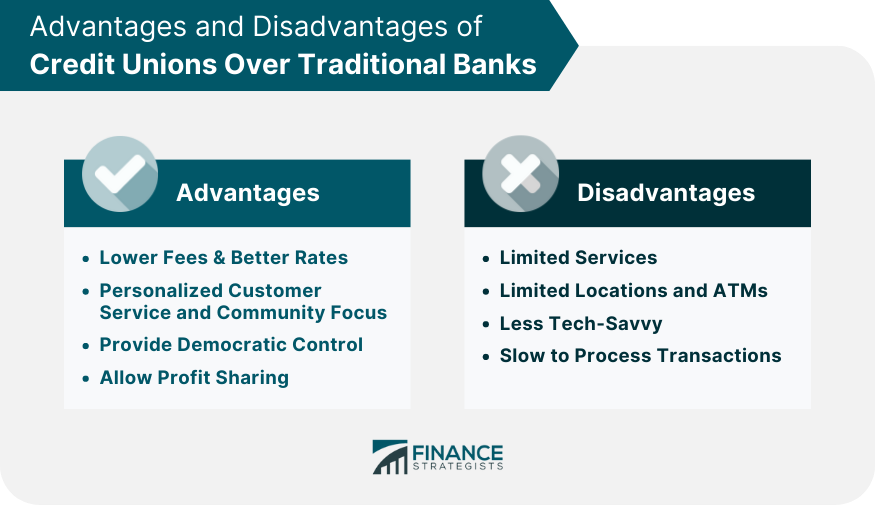Credit Union in Wyoming: Discover the Conveniences of Member-Focused Financial
Credit Union in Wyoming: Discover the Conveniences of Member-Focused Financial
Blog Article
The Ultimate Overview to Comprehending Cooperative Credit Union

Credit unions stand as one-of-a-kind financial entities, rooted in principles of mutual assistance and member-driven operations. As we browse with the complexities of credit score unions, an informative journey awaits to lose light on these member-focused establishments and how they differ from conventional banks.
What Are Credit Unions?
Lending institution are member-owned economic establishments that provide a series of financial solutions to their participants. Unlike typical financial institutions, cooperative credit union run as not-for-profit companies, meaning their primary focus gets on offering their members rather than making best use of profits. Participants of a cooperative credit union commonly share an usual bond, such as helping the exact same company, belonging to the same community, or being component of the very same company.
Among the vital benefits of lending institution is that they frequently supply higher rate of interest prices on interest-bearing accounts and reduced rates of interest on loans contrasted to banks. Wyoming Credit Union. This is since credit unions are structured to profit their participants straight, enabling them to pass on their earnings in the form of much better prices and fewer costs. Furthermore, credit scores unions are recognized for their personalized customer care, as they focus on building relationships with their participants to understand their one-of-a-kind monetary demands and objectives
History and Development of Lending Institution
The roots of member-owned economic cooperatives, understood today as lending institution, trace back to a time when areas looked for alternatives to standard financial establishments. The idea of lending institution come from the 19th century in Europe, with Friedrich Wilhelm Raiffeisen usually attributed as the leader of the cooperative banking activity. Raiffeisen started the very first recognized cooperative credit union in Germany in the mid-1800s, stressing area assistance and self-help concepts.
The development of cooperative credit union proceeded in North America, where Alphonse Desjardins developed the initial cooperative credit union in Canada in 1900. Quickly after, in 1909, the first U.S. lending institution was developed in New Hampshire by a group of Franco-American immigrants. These very early credit history unions run on the fundamental principles of common assistance, autonomous control, and member ownership.
Over time, lending institution have actually grown in popularity worldwide due to their not-for-profit framework, emphasis on serving participants, and using affordable economic items and solutions. Today, credit scores unions play a crucial function in the economic sector, giving community-oriented and obtainable financial options for individuals and businesses alike.

Subscription and Eligibility Requirements
Membership at a lending institution is commonly limited to people fulfilling certain eligibility criteria based upon the establishment's beginning concepts and governing needs. These criteria often consist of factors such as geographical area, employment see this condition, subscription in certain companies, or association with particular teams. Lending institution are understood for their community-oriented method, which is shown in their membership needs. Hybrid Line of Credit. Some credit history unions may only serve individuals who work or live in a specific location, while others might be tailored to employees of a certain company or participants of a certain organization.
In addition, cooperative credit union are structured as not-for-profit organizations, implying that their key objective is to offer their participants as opposed to generate revenues for investors. This read the article concentrate on participant service often translates into even more tailored attention, lower charges, and affordable rate of interest on car loans and financial savings accounts. By satisfying the qualification requirements and ending up being a member of a cooperative credit union, people can access a series of monetary services and products tailored to their specific requirements.
Solutions and Products Provided
One of the key aspects that establishes credit rating unions apart is the diverse range of financial solutions and items they provide to their members. Credit history unions normally give typical financial services such as savings and checking accounts, financings, and credit score cards.
Furthermore, lending institution usually provide convenient online and mobile financial options for participants to quickly handle their finances. They might use advantages such as common branching, enabling members to access their accounts at other cooperative credit union throughout the nation. Some credit unions additionally provide insurance policy items like home, life, and auto insurance policy to help participants safeguard their properties and liked ones.

Advantages of Financial With Cooperative Credit Union
When taking into consideration economic establishments, exploring the advantages of financial with credit unions discloses unique advantages for members looking for tailored service and affordable prices. Unlike huge financial institutions, credit scores unions are member-owned and focus on structure strong connections with their members. Generally, financial Homepage with a credit score union can provide a more personalized, cost-efficient, and member-centric monetary experience.
Verdict
In conclusion, credit report unions stand out as member-owned economic establishments that prioritize offering their members over optimizing profits. With origins dating back to 19th century Europe, credit score unions adhere to principles of shared support and participant ownership.
Credit rating unions are member-owned financial organizations that supply a variety of financial solutions to their members. The principle of credit rating unions stem in the 19th century in Europe, with Friedrich Wilhelm Raiffeisen frequently credited as the pioneer of the cooperative banking motion.The evolution of credit rating unions proceeded in North America, where Alphonse Desjardins developed the very first credit report union in Canada in 1900. Credit unions usually offer traditional banking solutions such as cost savings and inspecting accounts, finances, and credit scores cards.When thinking about economic establishments, exploring the benefits of financial with credit report unions reveals distinct benefits for members seeking individualized solution and affordable rates.
Report this page